If he can tell how a bike will ride just by pushing it, why does he keep riding and testing?
Words & Photography Chipps
Whether you know Guy Kesteven through the thousands of bike and product tests he’s written over the last 25 years, his over-exaggerated ‘bike journo’ riding style, or the chest-cam YouTube persona of KesTV, you will have come across him many times, ‘Kes’ is simply too prolific for you not to have done. Whether it’s reviewing top flight carbon chi-chi bikes or agonising over whether laces are better than Velcro on a trail shoe, it appears that if it moves, Mr Kesteven has reviewed it for one of many, many publications over the years.
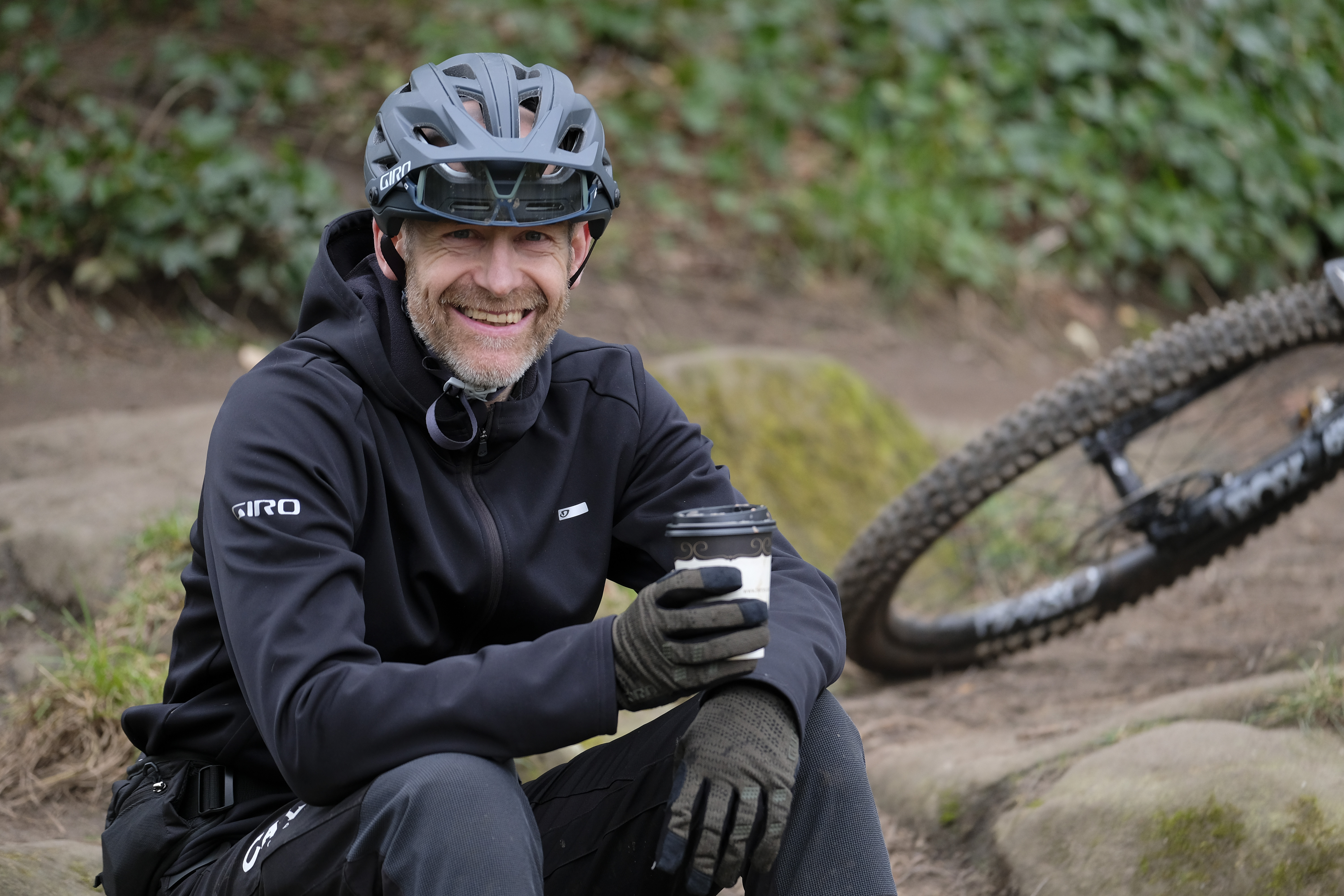
He has, if not filled, then certainly borrowed, the shoes of revered magazine bike tester Steve Worland as the most prolific mountain bike product tester in the UK (if not the world). Yet Guy knowingly walks the line between industry-respected reviewer and the self-parody of ‘peak bike journo’ because if you’ve written, as he reckons, around ten million words of reviews, you’re going to come up with some clichés now and again. He’s ridden probably every suspension design, suspension fork and ‘next-level shifting experience’ that you can buy. The guy, pardon the pun, is a testing machine driven to insane amounts of workaholism for reasons he’s still not sure about.
Latest Singletrack Merch
Buying and wearing our sustainable merch is another great way to support Singletrack
And yet he’s still not satisfied. Despite reckoning that he can tell the difference between the weight of different cassettes on near-identical bikes, he isn’t nearly done with bike testing yet. There’s just too much to do, in Guy’s opinion, for him to stop, or even slow down. Slowing down, he thinks, would be very dangerous for a highly strung, driven character like himself.
He hates sleep (“…think of all the things you could have been doing!”), hates being told to relax, and, in his own words “…is unbearable” to be around most of the time. He reckons he takes mountain biking too seriously to actually enjoy it. He’s intensely competitive, yet he’s unlikely to line up in fair competition to see who’s the fastest. Instead, he invariably sabotages any comparisons by means of fancy dress or unsuitable bike categories. His regular group ride isn’t called the ‘Monday night pub ride’ – no, it’s called ‘Fight Club’ and you will find no mercy there.
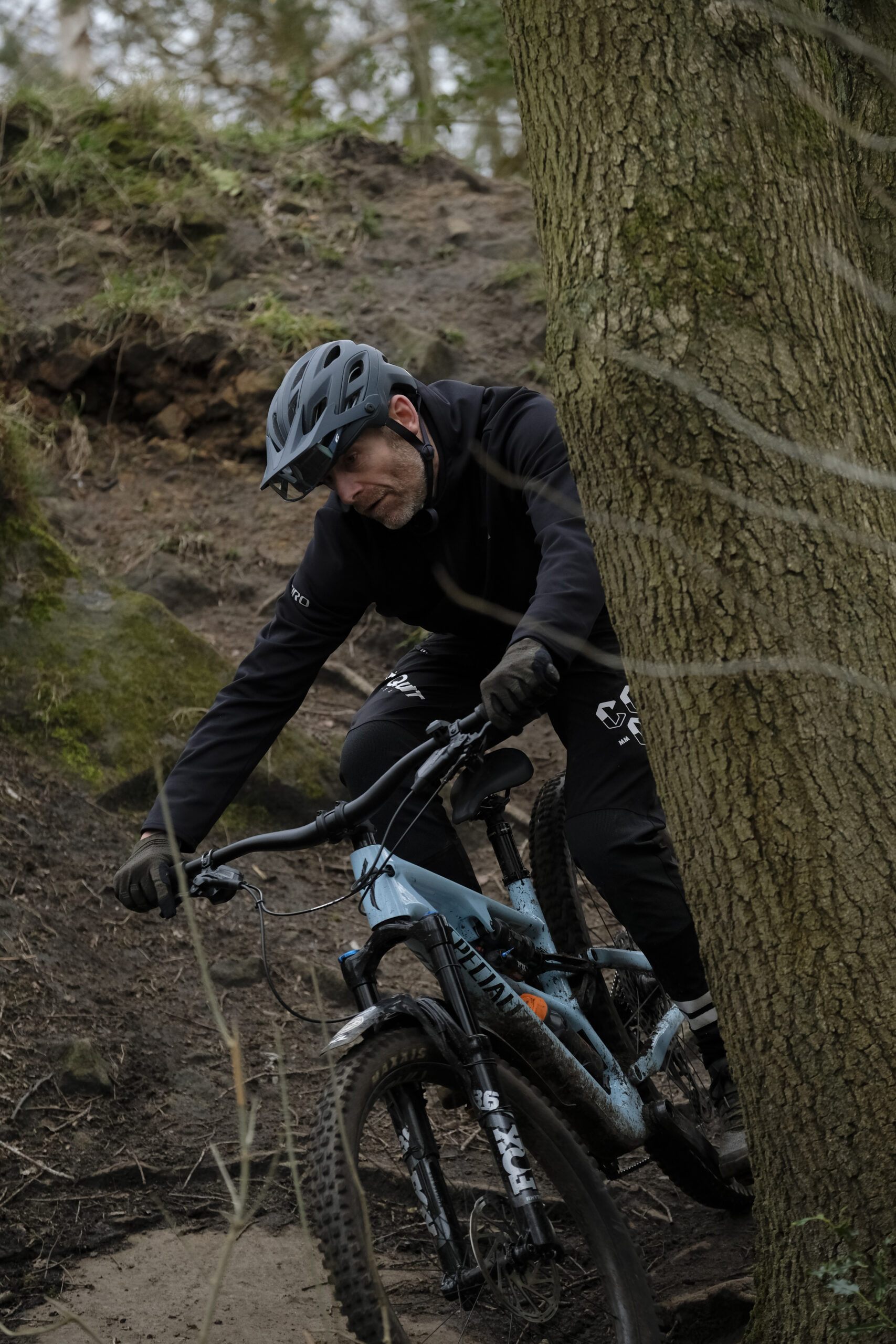
Even so, he’s a friendly, approachable chap in the real world, happy – delighted even – with where he is in life and very proud of what he’s achieved by effectively working three concurrent, badly paid jobs at once (all of them to do with writing about bikes). He’s happily married, lives in a lovely house in his home county of Yorkshire and has two “reasonably well-adjusted” college-age daughters and two grumpy old dogs.
He’s still happiest when he’s riding a review bike flat-out, talking to his GoPro while also trying to work out how to write 500 words on a front tyre later while wearing two odd test shoes (saves time and helps with the comparisons).
Better than digging holes for a living
I first remember Guy racing a tandem in a NEMBA downhill race in the mid-90s. There was only him on the bike as his girlfriend refused to let him drive it if she was on it. In that small pre-internet world, it didn’t take long to get noticed and it wasn’t long before he was writing bike tests in the very earliest days of MBR magazine.
Even after he’d earned MBR’s bike tester spot, Guy thought that it would be a bit of pin money until he could get a job working on a building site as a labourer. After all, digging holes was something he was very good at. Like, well, every bike journalist I’ve ever met, his path to the ‘career’ was unconventional, coming via archaeology and then the usual story of bike shop work and a gig in Zyro’s warehouse in the mid-90s. While Guy’s flamboyant gregariousness hides an over-compensating, shy character at heart, that was enough to get him a job doing marketing for Zyro, which led to newsletter writing, and then interviews for bike magazines.
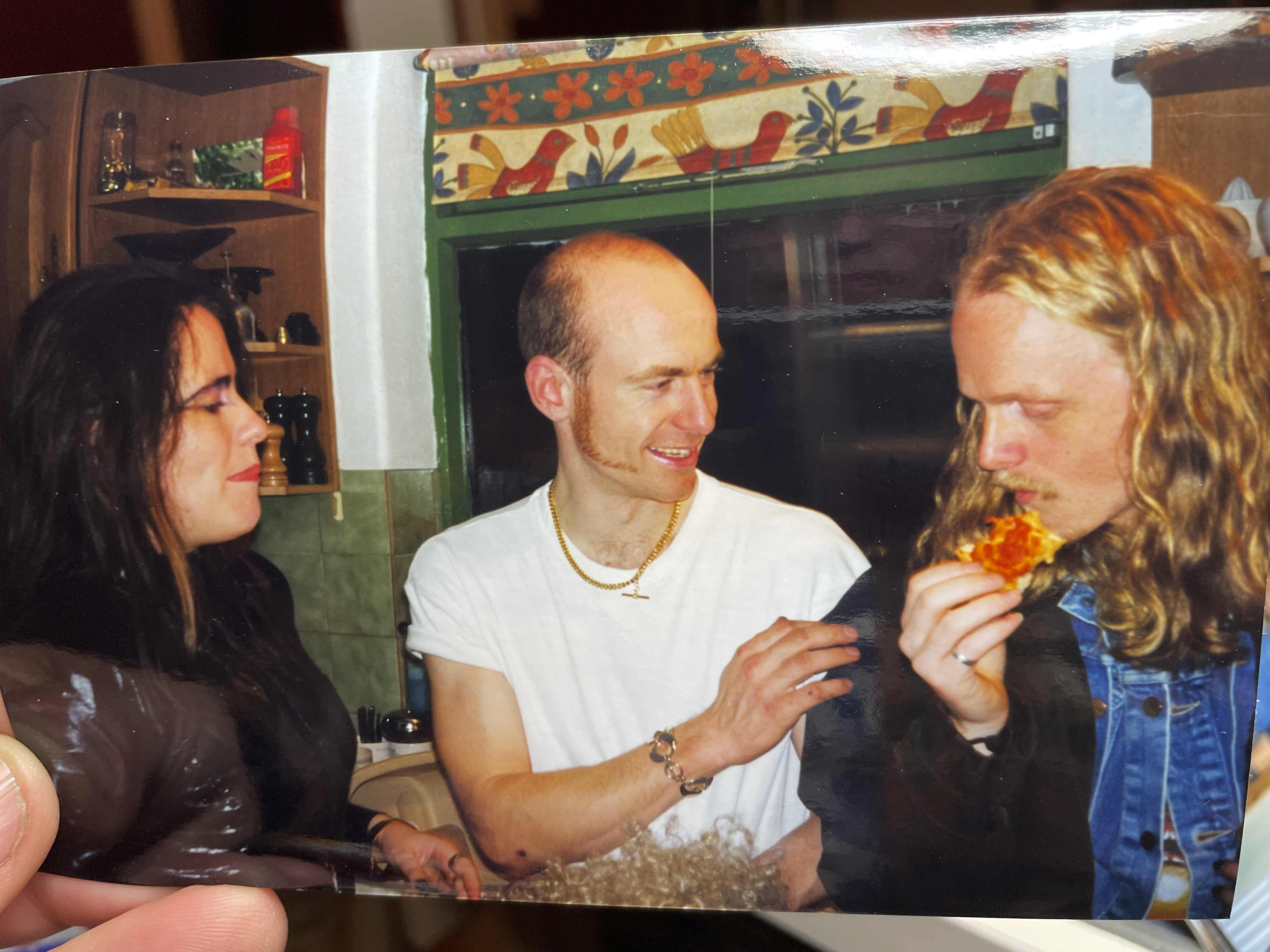
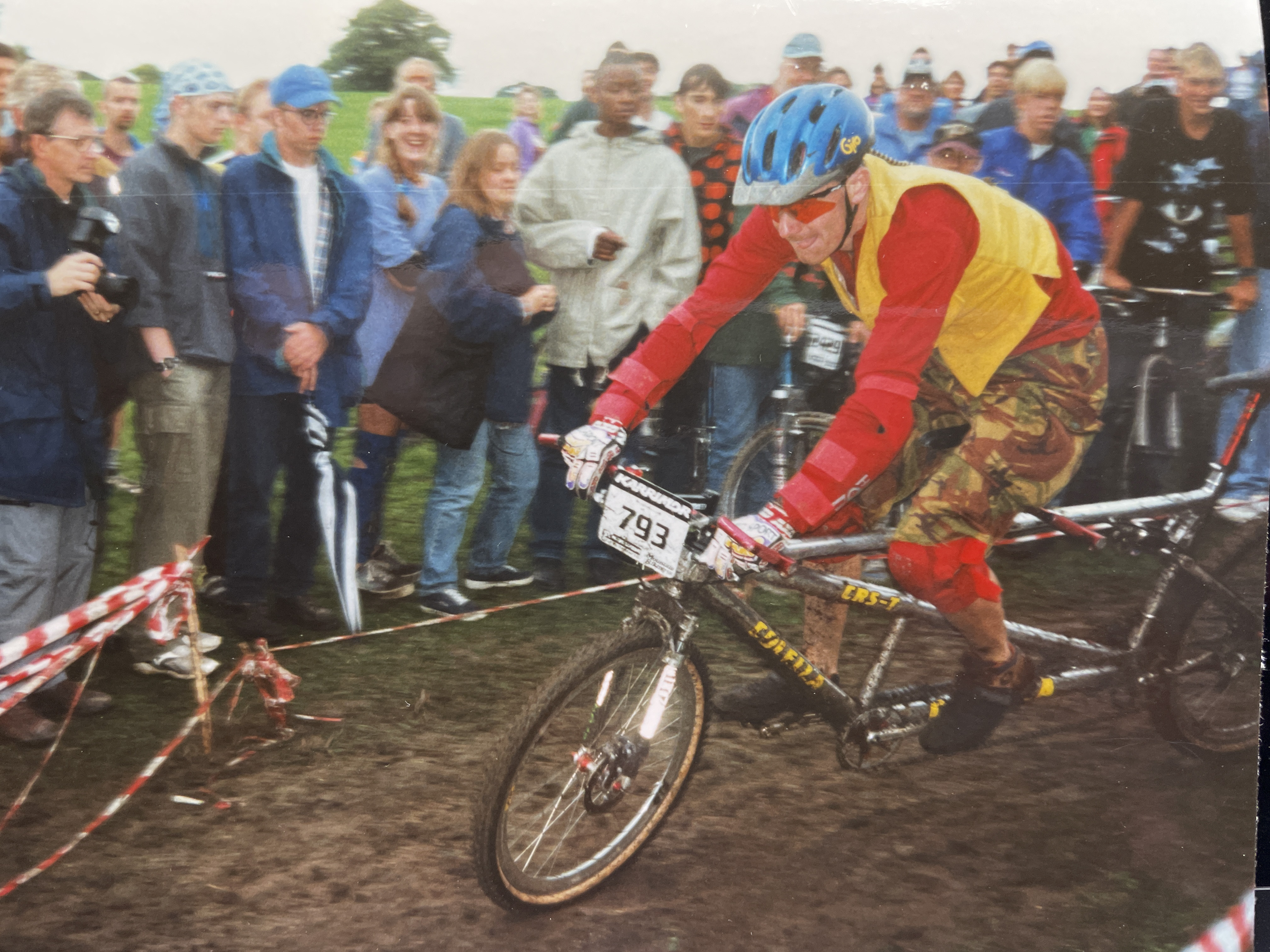

Fiercely independent, he worked from home in Yorkshire when the office was the place to be and survived on phone calls, faxes and a lot of writing. As magazines came and went, he was often to be seen in the background of many a bike test and byline and, after the tragic death of Steve Worland, soon took over his former mentor’s mantle of the go-to bike tester.
Along the way, he’s become a, somewhat surprised, minor YouTube star where his ‘jabbering to the chest-cam’ POV videos have a cult status, despite Guy originally using the GoPro as an easier way of making bike test notes than carrying a pen and notepad. He’s now mostly found on his KesTV channel, as well as writing for BikePerfect and other publications, though he later admits that he’s far more excited about ‘Pedalling Past’(instagram.com/pedallingpast) – where he sees his retirement being spent pootling around on a touring bike, pointing out historical points of interest…

Guy’s level of drive is impressive, and yet unfathomable to most people – he has always been fizzing with energy, both mental and physical, in the 30 years that I’ve known him. I managed to get him to sit still and chat for an afternoon; something that turned into probably the longest interview recording ever for me, and something resembling a therapy session for him.
We covered everything from cutaway Sherman tank illustrations, saucepans and siblings, to how his neat toolbox was really a PR stunt. In between, though, he gave out some of his many, pointed and usually bang-on observations about bikes, the process of testing them, and of the people who scratch a living writing about the process.
Luckily, there was also coffee from Bettys Tea Rooms, as befitting a Yorkshireman, and some seriously good Scotch eggs…
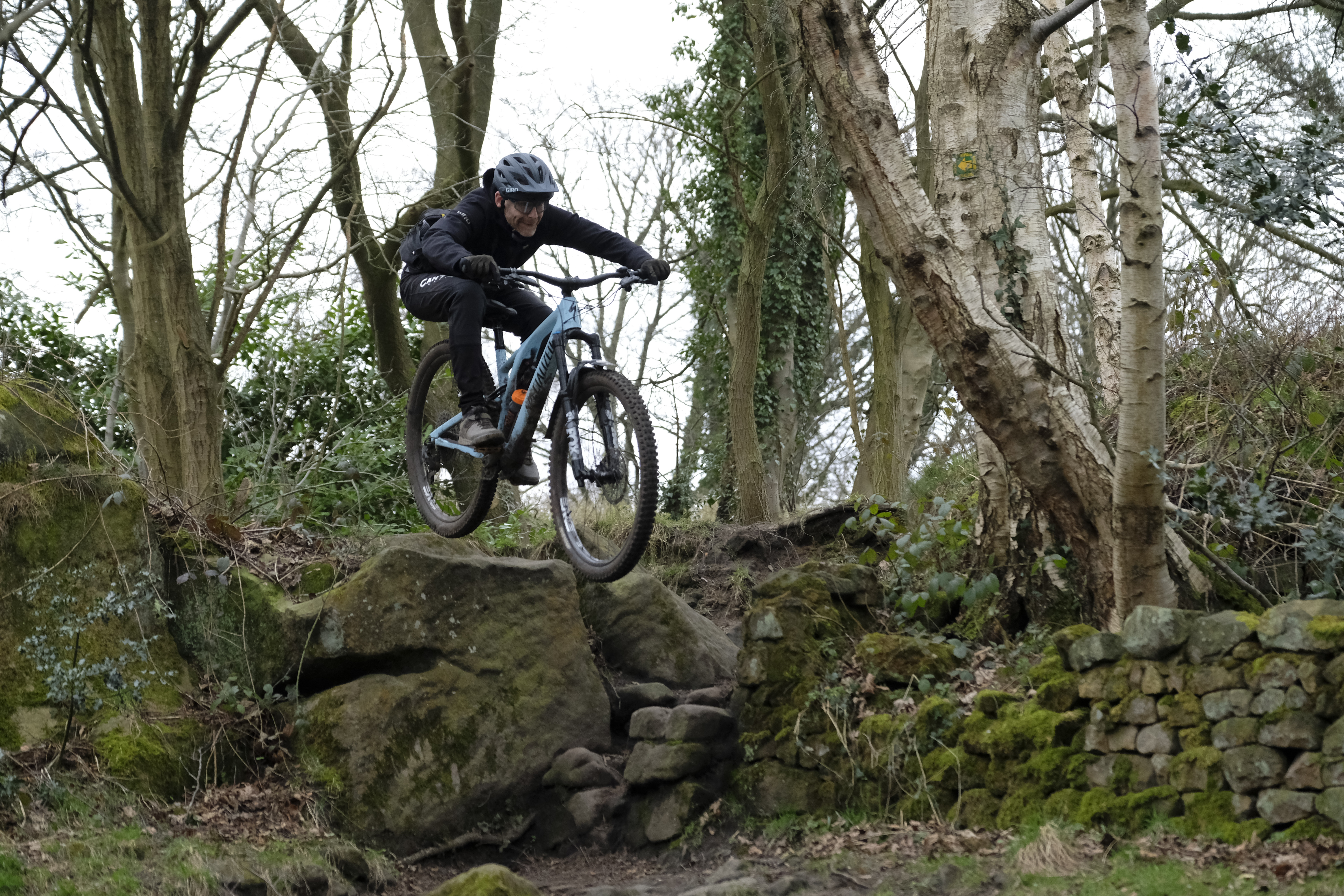
So, Guy, how DO you test bikes?
“It’s an algorithm!” he quips. Not actually joking.
I can remember seeing you with a new bike once, and you said: ‘I’ve already tested this frame with a different groupset, and I’ve tested lots of other bikes with this groupset and this fork, so I can probably write a review without even riding it. But I’m still going to ride it, because you never know.”
That’s why I flunked my chats with Pinkbike. They asked how long it would take me to review a bike, and I said ‘About three or four days’. I overestimated for them, too.
You’ve got to try the variables, but if you know all the variables, you can get a good idea in three runs at Stainburn. Critical mass [the knowledge about how everything rides] is absolutely crucial. It’s harder now that I’m not doing grouptests, but when I was literally testing four bikes a week, every week, you were just very, very attuned to stuff.
It’s weird things – I’ve just been testing that Stumpjumper Alloy against a Stumpjumper Carbon and obviously the main variable is the frame material, but also – same back wheel, but one’s got an NX cassette and one has a GX cassette. Both me and the guy riding the other bike felt there was a slight lag and chatter on the Stumpy Alloy wheel compared to the Stumpy Carbon wheel. And when you swap the wheels… I think you can feel it.
I know it sounds ridiculous, but I’ve said it before and I’ll say it again: you can sometimes know how a frame will feel just as you wheel it across the workshop. You’ll get a sense of the resonance between the grip and the ground. I know how that sounds, but let’s proudly plant that flag into ‘Peak bike journo’. I’m not the only who’s said that, though. Realistically, any craftsman who’s been working for 25 years with a very limited range of materials will know his craft.
Working as an archaeologist, if I hit the ground with a shovel, I could tell you a lot about what the ground was…
How do you get to that level of precise knowledge, then?
Riding as many things as frequently as possible. Head to head is always the best. If you’re testing wine and drink the whole bottle, you’ll just go ‘Hzzz, that warsh a good evezning… hic!’ whereas if you’re spitting and rinsing like a proper wine taster, you’ll be like ‘Ooh, earthy… ooh! Bitter… Ooh! Blueberries…’ So if you have four bikes, all the tyre pressures are the same and all the forks are set up the same, then, yeah.
You can tell pretty quickly, sure.
Sometimes, you can’t do that and it takes you months. That’s where you’re thinking ‘This should be so much better than it is. What’s wrong with this?
And that’s the irony of the job. People say ‘Ooh, you get to ride the best bikes all the time!’ and you say ‘No, you ride the worst bikes all the time, because those are the ones that really need digging into.’
I dunno. How do you test bikes? You ride them a lot. And a lot of them a lot. And then, to cover the durability point of view, I just lend them all out to my mates. Again, that’s the other glamorous side of things. If you’ve got a SRAM XX1 groupset, you don’t keep it to yourself, because you’ll never wear it out, so you give it to Andy the Architect who rides the same bike four days a week, because I’m busy riding other bikes. They’re the people who destroy it for you. When it comes to kit, you already know about the odd gloves thing.

Wearing two different gloves and two different shoes on every ride? That’s a hallmark of yours. Going back to testing, Steve Worland once said that he could ride off-road from home to his office on a test bike and could usually write the review straight away. And if he wasn’t sure, he’d ride it home and back again and then write the review.
That’s right, though that’s not what people want to hear. They want to hear that you’ve been really in-depth…
…and taken it to the Lakes and ridden it in the wet and the dry and the deserts of the Sahara.
I know more about how that bike strikes that third rock after that corner, on that trail, than I would from another two months of riding it. And the longer you ride a bike, the more you get used to that bike. The first five minutes are worth more than the next five hours. Unless you’ve forgotten to take the lockout off. Or the brakes are switched…
But bike testing is fascinating! I love it. Still! Take yesterday – three/four hours, those two Stumpjumpers, back to back. I love that head to head. The problem-solving, the digging into it. Is it this? Is it that? And then trying to convey that… There are two separate things, really. It’s the actual analytical side of things, but I like to think being able to convey that on the page is still important. You’re not an expert at something until you can explain it to someone who isn’t an expert. Like I hate using ‘Kinematic’ as that’s just showing off – it just means ‘Where the dots are in space’ – you’re just trying to sound clever.
Guy has to be the embodiment of a workaholic. He loves his job, but there’s so little room for anything else. Although he has fun times with his family and friends, it’s generally scheduled around work. Even when he boils the kettle, he knows that it gives him three minutes in which to write another few lines of the next review. For someone who is arguably at the top of his game, surely he could learn to chill a little? But that’s just not in his nature. He’s always worked flat out at everything he’s done, whether digging holes in medieval cattle markets or writing about wireless shifting. Having two overachieving, much older siblings might explain some of his need to prove himself, but it just seems hard wired into his nature to go full-on, full-time. So, what is Guy Kesteven still trying to prove?
That I’m good enough.
Surely you’ve done it by now?
There’s always something else to do. There’s always something you can do better, or could have done better. I’ve always tried my hardest, but sometimes that’s not the way to do the best job as you’ve probably been trying to do three things to your best ability rather than focusing on one. Mountain biking is a great place for me to be in as it’s masochistic. It’s deliberately the more awkward way to do things.

Because you’ve been in the world we both inhabit for a long time, many of the people you’re talking to in the industry are people you’ve known a long time. Modern bikes are pretty much all excellent. Do you have those awkward conversations when something isn’t up to expectations?
I’ll give things the benefit of the doubt. I’ll listen to their explanation of why something isn’t as good as you think, but hearing that and then still writing a critical review seems disrespectful, so often I’ll write it anyway. It’s easier to seek forgiveness than permission.
You sometimes think that with all these ‘Ooh, the latest geometry!’ and think ‘Are we just vanishing up our arse?’, but then you put someone who rides very infrequently on a bike with a low centre of gravity and a more stable front end and a bit more reach and they’ll go ‘This is so much better than my old bike!’ and they have no idea why.
But you have to still question these things all the time. You’ll have those moments of clarity when you think: ‘Why am I clawing up this steep, rocky climb, in the middle of the night, in the Dales, staring at a 2.5in soft compound tyre that weighs a kilo and a half. I’m not going to hit anything on this ride that needs a kilo and a half tyre. And why is it on a 30mm rim, because it feels pretty dull?’ I prefer the feel of a thinner tyre on a narrower rim. It’s probably not faster because that’s not what Nino Schurter runs and he’s probably done the maths, but to me, this feels brighter and better. Sometimes it makes no sense why something feels better – like my 4.4kg -framed Cotic FlareMAX – climbs like a dream, even though if you waggle it in a certain way you think ‘Ooh, the bearing must have fallen out’, but that’s just the way it is. And yet it goes like shit off a stick. And because it’s steel and it’s got a fork in that’s too short and because you’re riding unfashionably lightweight tyres, it’s WAY more fun when you hunt people down on descents.
So immediately you’re performing beyond… you can see I’m getting excited just talking about it. I’m being awkward, just so that I can overachieve. That’s why ‘Downcountry’ has been great for me, because me and the bike hit our limits at the same time and, therefore, I push a lot harder because I don’t feel I’m letting the bike down.

Where are bikes going? Are they just getting incrementally better, or do we have some big steps yet to come?
Someone’s got to do something about the transmission. The derailleur hanging off the bottom corner. It’s just ugly. And it’s psychologically damaging if you’re always in that massive 50T cog. It’s depressing! There are a lot of ways we could play with psychology – just hide the gears away and the things we don’t need to play with. I think Scott and Bold have very good ideas, hiding their shocks away. Nobody knows what to do with their shocks. Or they do and they’re too obsessive about them.
Specialized’s SWAT is clever as it’s a bit more awkward to get to the tools, so you’re not tempted to steal the tool from your bike when at home and leave it on your workbench. In the same way that tasty energy bars are shit because you eat them when you don’t need to. Whereas that ancient Powerbar you got free from a magazine in 1994 is still in your pack.
So, I guess gearboxes. Stop putting bigger rotors on bikes. Or put the bigger rotor on the back. Brakes are too powerful at the front now. They’re great if you’re a confident rider who brakes at the right time, but most of us don’t – beginners and pro riders all brake late and hard, which is the right way. The rest of us are shit. On a longer travel bike, the second you touch a big front brake all your lovely geometry is ruined. Most of my crashes have been caused by pulling the front brake too hard. At the point where you ruin the bike.
Bikes thrive on speed. It’s you pulling on the brakes that f*cks them up. Or steering. And we’ve got rid of steering by just making bikes long and low, so you just lean. So if you put a 160mm rotor up front and a 180 on the back, you’ll get a much more stable geometry and you’ll be through the situation before you can brake and mess it up. Just last week I was on a bike where the wheels I’d swapped out didn’t work well with the brakes and after doing the first descent with effectively no brakes, I spent the rest of the evening trying not to brake.
It’s great that you can still have moments of revelation like that after rough-stuffing since 1985…
I think that recreational cross-country is going to be a massive thing because there are a lot of people moving into ‘the cross-country space’ who haven’t previously. They [the manufacturers] have made gravel bikes a mess. They’re not suitable. They’re a great gateway drug, but they’re not suitable for what most people need. In the same way that mountain bikes have got more capable and confident, but there’s no compelling fashionable story about cross-country mountain bikes. It’s still someone without a peak on their hat, in an uncomfortable position with their bars the wrong way up. Whereas gravel is all curated and beautiful for the modern millennial bike consumer, but the bikes are fundamentally unsuitable.

Because the bikes are great for you and me because we love how they make our dull old trails fun again? It’s a bit sketchy, but you can get away with it?
The trouble is, mountain bikes are inherently intimidating. As soon as you say it’s a mountain bike… ‘Oh, you can do Red Bull Rampage then?’ even if it’s an 80mm hardtail. Whereas a gravel bike, no one expects you to do Rampage. Cross-country bikes have been around for 30 years now, but no one buys them. They’re bikes for going across country on.
I’ve got an alloy Specialized Chisel: 100mm fork, 2.3in tyres, nine kilos. It’s nearly a kilo lighter than my singlespeed gravel bike… And it’s not even expensive. It’s just really suitable for what we want to do on it. It’s really weird seeing people riding on seven-inch full suspension e-bikes.
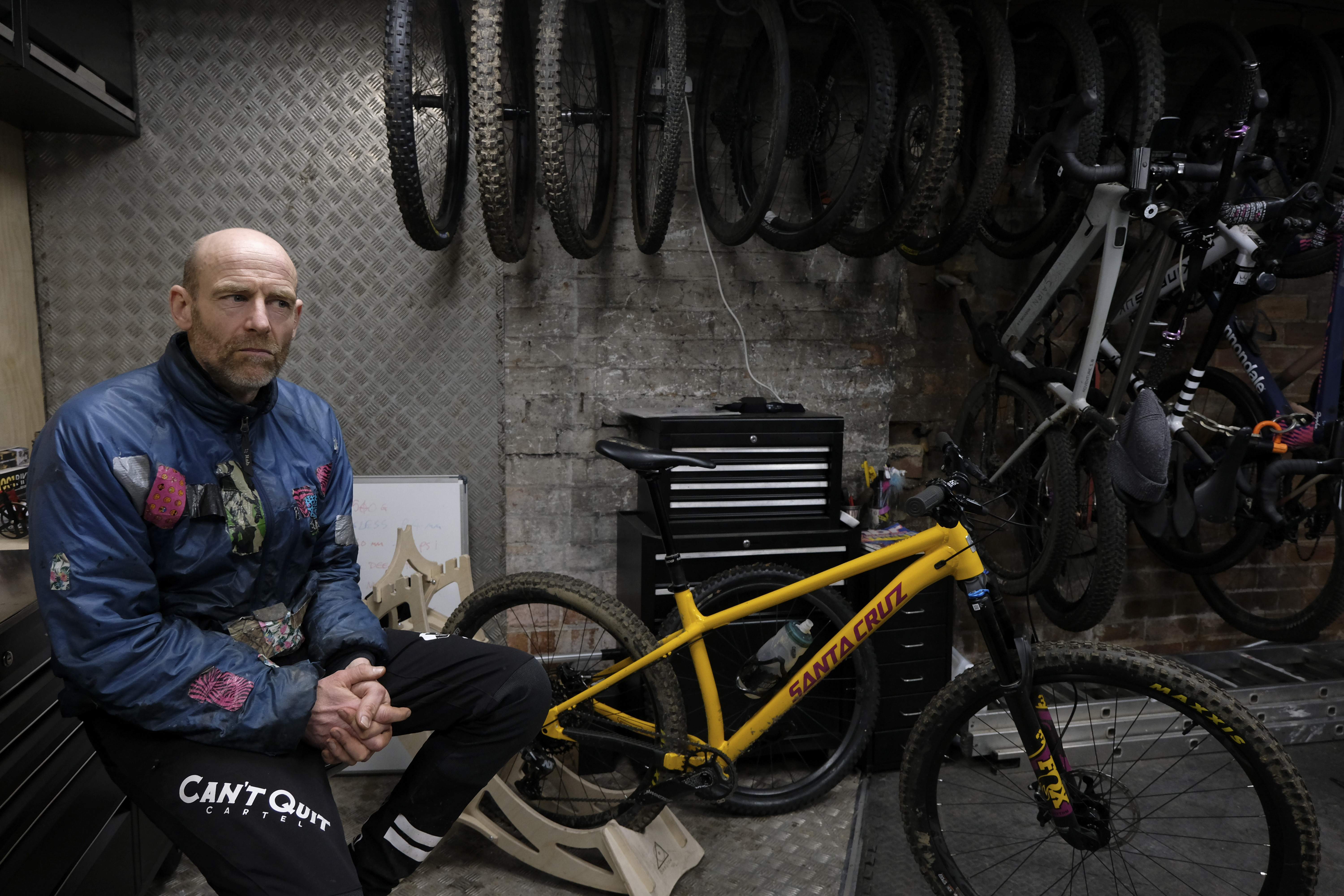

Are bikes simply good enough for everything now?
I almost think they’re too good for where most of us ride. But they’re not, because actually we’re all much older and we’re more fragile. Yeah, there’s a few young people coming through, but most of us are more in need of being told by our vehicle that we’re actually still great and that we’re still rad. We can still wear a Fox top instead of Velcro slippers. We need it. Modern bikes are the miracle that’s stopped us all looking older – and I’d include e-bikes in that as well. We can all still ride like we were 20. Which is fabulous!
It’s like all those bike testers going ‘Ooh, it’s 120mm travel, it’s so much better! It feels more alive and vital. You should buy this bike…’ No, everybody should buy a six-inch bike, ’cos actually it’ll pedal just as well. It’ll weigh the same as it’s got the same tyres, bars… there’s maybe 300g difference in the frame, but you will eat shit less.
I’m not even sure that modern bikes are any faster. They keep saying they are, but if you look at Strava… these longer, slacker, lower bikes certainly feel faster but my fastest time around Stainburn is still on a 140mm-forked Lynskey 27.5in hardtail. Wasn’t even a 29er. Didn’t even have a dropper post.
No, I don’t think that modern bikes will ever be good enough. It’s just where do you want to get on or off.
We’ve already started cutting into dog-walking time, and then Guy has to make dinner for the family (though the only time he’ll stand still in the kitchen is to make waffles, as the penalty for inattention is too steep with those) so I leave him pondering where we’ve got to in his life story and therapy session.
Being the most prolific bike tester on the planet is a lofty position, and he takes that responsibility very seriously. He really cares about the advice he gives to his readers, which I applaud. Whether he’ll ever slow down from giving 110%, 110% of the time is another matter. He still has a lot to prove – mostly to himself.




